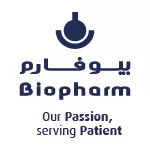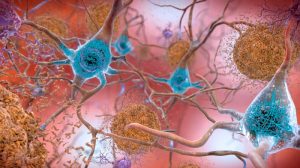The First Tau-Targeting Alzheimer’s Vaccine and Its Global Promise for Neuroscience and Public Health

- According to some estimates, there are over 55 million Alzheimer’s patients in the world, a figure set to double every 20 years.
- Created by the team at the UNM, this new vaccine probes tau protein buildup, promising an entirely new direction for prevention and a landmark moment for neurological research and an international field in public health.
The Global Scale of Alzheimer’s Disease
Alzheimer’s disease is considered one of the most urgent health challenges of our time. Over 55 million people worldwide are living with dementia, the majority of whom have Alzheimer’s, according to the World Health Organisation. In the United Kingdom, nearly 982,000 people are affected, with that figure projected to exceed one million within the next few years.
The economic burden is substantial. Exact figures not having been established for the matter under consideration, some are estimating the current global cost of dementia-related care to be more than $1 trillion, with the figure approaching $2.8 trillion by 2030. Treatment has traditionally been symptomatic, emphasising a critical need for disease-modifying therapies.
A Breakthrough at the University of New Mexico
In a significant development, researchers at the University of New Mexico have created a vaccine candidate designed to slow or potentially prevent Alzheimer’s disease by targeting one of its biological drivers — the tau protein. Tau that is misfolded and abnormally phosphorylated accumulates in the brain to form tangles that interfere with neuronal function and eventually lead to cell death.
As a principal initiative by Dr Kiran Bhaskar, the team at UNM has developed this vaccine in order to generate an immune response targeted specifically against tau phosphorylated at threonine 181 (pT181). This marks a distinct approach compared to past treatments, which largely focused on amyloid-beta protein plaques.
Preclinical trials in mice and non-human primates showed reduced tau pathology, improved behavioural outcomes, and favourable safety results. These promising outcomes form the basis for moving into Phase 1 human clinical trials.
Preparing for Human Trials
Evaluation of the safety, tolerability, and immunogenicity of the vaccine would be conducted in a Phase 1a/1b double-blind, placebo-controlled trial scheduled in early 2026 in experimental settings with early-stage subjects with Alzheimer’s for 12 months.
The trial will be overseen by Dr Janice Knoefel at the Centre for Memory and Ageing, University of New Mexico. The subjects will be observed for possibilities of adverse reactions, immune responses, and cognitive outcomes that could inform decisions to move the vaccine into Phase 2 testing.
The Technology and Licensing Structure
The vaccine is being produced under Good Manufacturing Practice (GMP) conditions by TheraVac Biologics, a Canadian biotechnology company that holds exclusive licensing rights to the formulation. This partnership ensures that clinical-grade product manufacturing meets regulatory quality standards.
The research and upcoming trials are supported by a $1 million grant from the Alzheimer’s Association’s “Part the Cloud” initiative, which backs high-risk, high-reward projects with the potential to dramatically alter disease trajectories.
“We are excited to begin translating our research into a clinical trial,” said Dr Bhaskar. “Our results in animal models are promising, and now we must confirm whether this approach is safe and effective in humans.”
Implications for the Future of Neuroscience
If this vaccine successfully passes human testing at all, it could signal a complete shift in the way in which Alzheimer’s is treated, from symptomatic relief to prevention of the disease. It would also validate tau as a primary therapeutic target, with broader implications for other tauopathies, such as frontotemporal dementia and progressive supranuclear palsy.
Recent years have seen the field evolve from viewing cognitive decline through a narrow lens to recognising its complexity. Prevention and early intervention are coming into the limelight, and the vaccine is nestled in those long-term horizons. Its success could, in fact, further fast-track funding shifts, interdisciplinary research, and further thrust brain health into the public consciousness.
Impact on Health Systems and Public Strategy
Estimates from the Alzheimer’s Society place the total cost of dementia to the UK at over £42 billion annually — a figure that includes healthcare, social care, and unpaid caregiving. NHS-specific costs form only a portion of this total and are considerable, but less than £30 billion.
If a vaccine can delay the symptoms of Alzheimer’s by even a couple of years, it will greatly reduce the number of individuals requiring intensive care, lessen the pressure on memory clinics and long-term care homes, and permit the more efficient use of health system resources.
At this point, the World Health Organisation, national authorities such as the MHRA of the UK, and the EMA of Europe will have crucial roles in overseeing safety data, trial protocols, and approvals themselves.
Brand and Industry Impact
Pharmaceutical companies and healthcare brands should be closely monitoring this development. While there is no current indication of commercial partnerships between UNM and global pharma firms, the technology’s potential invites future collaborations.
If, during the early stages, the vaccine shows promising results in testing, companies such as GlaxoSmithKline and AstraZeneca in the United Kingdom, both with great experience in neurology and vaccine development, may want to explore co-development or licensing opportunities.
Diagnostic firms, digital health arenas, and cognitive wellness businesses would be well-positioned to join in this preventive shift by developing early detection tools, designing awareness campaigns, or building advisory networks alongside neuroscience researchers.
Next Steps for the UNM Vaccine
The upcoming trial marks the beginning of a long regulatory journey. For primary endpoints, the trial will investigate safety and immunogenicity. Upon obtaining favourable outcomes, the 2nd and 3rd phases shall be tailored to a wider population. At best, then, it will still require some years of testing and review before it could even be considered for approval.
Transparency throughout this process will be critical. Open-access publication of trial data, independent review, and clear communication with the public and health professionals will all help build trust and engagement.
How Brands and Institutions Can Prepare
Organisations invested in brain health and ageing should consider the following actions:
- Track updates from clinical trial registries and peer-reviewed publications
- Monitor media coverage and public sentiment around tau-based therapies
- Develop content campaigns focused on early cognitive care and prevention
- Build cross-sector alliances with academic research hubs and health charities
Responsible Communication and Public Education
Misinformation remains a persistent risk in medical innovation. Brands and media platforms must ensure that any messaging around Alzheimer’s treatments clearly distinguishes between preclinical, investigational, and approved therapies.
UNM researchers have not claimed to have developed a cure, nor have they announced readiness for market. The vaccine remains investigational and subject to rigorous clinical testing.
Looking Ahead
The University of New Mexico’s tau-targeting vaccine candidate introduces a promising new direction in the fight against Alzheimer’s disease. While still in the early stages of development, it has opened the door to a future where prevention could play a central role in managing neurodegeneration.
If proven safe and effective, this vaccine could transform not only clinical approaches but also how healthcare systems, carers, and brands think about ageing and memory loss.
Engagement from a wide range of stakeholders — from pharma and biotech to digital health and public policy — will be key in shaping the next phase of Alzheimer’s research, access, and education.








































